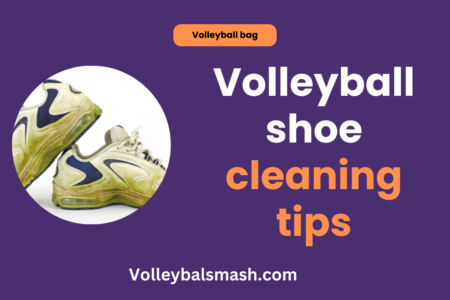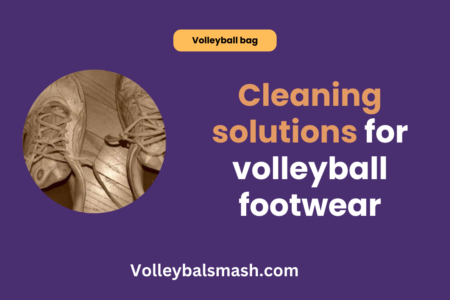Welcome to our informative blog post on the essential equipment needed for setting up a volleyball court. Whether you are a recreational player looking to set up a court in your backyard or a school or community organization looking to host organized games, having the right equipment is crucial for ensuring a safe and enjoyable playing experience. In this post, you will learn about the critical pieces of equipment needed to create a regulation volleyball court, from boundary lines and nets to accessories that enhance your game.
Key Takeaways:
- Net and Antennas: A standard volleyball net measures 32 feet long and 39 inches tall for men’s matches, and 31 feet long and 7 feet 4⅛ inches tall for women’s matches. Antennas are used to mark the edges of the net, and they are required in official games.
- Poles and Boundary Lines: Sturdy poles are necessary to support the net, and they should be set up at the correct height. Boundary lines are used to mark the court’s 30-foot by 30-foot playing area, and they should be clearly visible and properly secured.
- Ball and Ball Pump: A regulation volleyball is required for gameplay, and it should be properly inflated. A ball pump is also necessary to ensure that the ball is at the correct air pressure for a fair and consistent game.

Equipment needed for Setting Up a Volleyball Court
Obviously, setting up a volleyball court requires certain equipment to ensure that the game can be played safely and effectively. In this section, we will discuss the essential equipment needed to set up a volleyball court.
The Volleyball Net and its Features
The volleyball net is a crucial piece of equipment for setting up a volleyball court. It is typically made of nylon and measures 32 feet in length and 39 inches in width for a standard court. The net should have clearly defined markings to indicate the top, bottom, and center, as well as antennae to mark the boundaries of the playing area.
The Volleyball Pole and its Importance
The volleyball pole is another essential component of a volleyball court. The poles are typically made of galvanized steel and are designed to securely hold the volleyball net in place. They should be sturdy and durable to withstand the tension of the net and the force of the ball during play. Proper installation and maintenance of the poles are crucial to ensuring the safety and integrity of the court.
Volleyball Court Lines and Markers
Marking the boundaries of the volleyball court is essential for maintaining the integrity of the game. The court lines and markers should be clearly defined and visible to all players. These lines include the center line, attack lines, and boundary lines, which help define the playing area and regulate player movement during the game.
Necessary Tools for Court Setup
When setting up a volleyball court, you will need a few basic tools to aid in the process. These may include a measuring tape, level, and hammer or mallet for securing the poles and markers in place. It is essential to ensure that the court is set up accurately and securely to prevent any potential hazards during gameplay.
Detailed Guide to Setting Up a Volleyball Court
Your volleyball court setup begins with the net system. The net system consists of the net, antennas, and the centerline. The standard indoor volleyball net measures 32 feet in length and is set at a height of 7 feet 4 1/8 inches for men and 7 feet 4 1/8 inches for women. The net should be taut and not sag in the middle. For more detailed regulations and setup instructions for an indoor volleyball net, you can refer to this Indoor Volleyball Net – Regulations and Setup resource.
Step-by-Step Process in Setting Up the Net System
Setting up the net system correctly is crucial for a fair game of volleyball. Here is a step-by-step guide to help you properly set up the net system.
| Step 1: | Measure 32 feet from end line to end line and mark the mid-point. |
| Step 2: | Set up the poles on each side at a distance of 3 feet from the sidelines, connecting the volleyball net securely. |
| Step 3: | Attach the antennas to the top of the net to mark the boundary of the court. |
Proper Setup of Court Boundaries
In addition to the net system, the court boundaries must also be properly marked. The boundaries are defined by the end lines and the sidelines. It is important to ensure that the court boundaries are clearly visible to avoid disputes during the game.
What are the rules for line markings on a volleyball court?
Safety Precautions in Volleyball Court Setup
Lastly, it is crucial to consider safety precautions when setting up a volleyball court. By ensuring that all equipment is properly installed and maintained, you can minimize the risk of injuries during play. For more detailed information on court setup, you can refer to Everything You Need To Know About Volleyball Courts.
Ensuring the Stability and Durability of Equipment
When setting up a volleyball court, it is essential to ensure that the net, poles, and boundary lines are stable and durable. You should carefully inspect the equipment for any signs of wear and tear, and make any necessary repairs or replacements. By using high-quality, properly maintained equipment, you can prevent accidents and ensure a safe playing environment for everyone involved.
Injury Prevention Measures during Court Setup
During court setup, it is important to take measures to prevent injuries. This includes properly securing the net and poles to prevent them from falling, as well as ensuring that boundary lines are clearly marked to prevent trips and falls. Additionally, you should be mindful of any hazardous conditions in the surrounding area, such as uneven ground or obstacles that could pose a risk to players. By taking these precautions, you can minimize the risk of injuries and create a safe and enjoyable playing environment.
Conclusion
Drawing together all the necessary information, it is clear that the equipment required for setting up a volleyball court is essential for a successful and safe game. From the net system to the boundary markers, each piece serves a specific purpose in maintaining the integrity of the game. By ensuring that you have all the required equipment, you can set up a volleyball court that meets regulation standards and provides an enjoyable experience for all players involved.
FAQ
What equipment is required for setting up a volleyball court?
The essential equipment needed for setting up a volleyball court includes boundary lines, volleyball net, volleyball poles, and volleyball. Boundary lines mark the outer edges of the court, while the volleyball net is stretched across the center to divide the two opposing teams. Volleyball poles are used to support the net and keep it at the required height. Additionally, an antenna is also used to mark the outer edges of the net, helping players determine the boundaries. It is important to ensure that all equipment meets the official regulations set by the governing body of the sport.
Are there specific dimensions for setting up a volleyball court?
Yes, there are specific dimensions for setting up a volleyball court. A standard indoor volleyball court measures 18 meters long and 9 meters wide, with an additional 2-meter clearance around the court. The volleyball net is placed at the center of the court, standing at a height of 2.43 meters for men’s competitions and 2.24 meters for women’s competitions. The boundaries of the court are marked by boundary lines, which extend 9 meters in each direction from the center of the net. It is crucial to adhere to these dimensions to ensure a fair and competitive playing environment.
What materials should be used for the volleyball court equipment?
The volleyball court equipment should be made from quality, durable materials to ensure safety and stability during gameplay. The boundary lines are typically made of strong, flexible materials such as vinyl or rubber, capable of withstanding frequent movement and impact. Volleyball nets are usually made of knotless nylon or polyester, offering strength and resistance to wear and tear. The volleyball poles are commonly constructed from lightweight, yet sturdy materials such as aluminum or steel, providing the necessary support for the net. It is advisable to invest in high-quality equipment to guarantee longevity and optimal performance.



